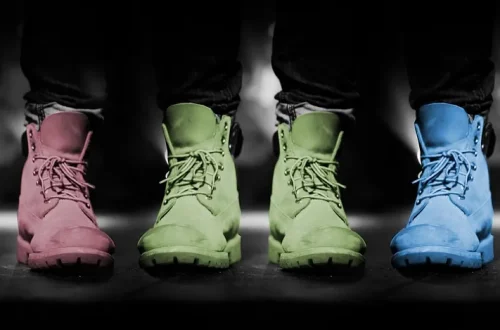
Understanding Breast Changes After Weight Loss: What to Expect
Losing weight is a significant achievement for many individuals; however, it can bring about unexpected changes in the body, particularly in the breast area. The breasts are made up of glandular and fatty tissue, and as weight fluctuates, the composition of these tissues can also change. Many people find that their breasts may appear smaller, sag, or change in shape after a weight loss journey. These transformations can be surprising and sometimes distressing, as they may not align with one’s body image goals.
Understanding how weight loss affects breast tissue is essential for anyone considering or undergoing weight loss. Factors such as age, genetics, and the amount of weight lost all play important roles in how breasts react to changes in body weight. Additionally, hormonal changes that often accompany weight loss can also contribute to alterations in breast size and shape. It’s vital to embrace these changes as part of a broader journey towards health and wellness. By understanding what to expect, individuals can better prepare themselves for the body changes that may accompany their new lifestyle.
How Weight Loss Affects Breast Composition
When an individual loses weight, the distribution of fat in the body changes significantly. Breasts typically contain a combination of fatty tissue and glandular tissue, and the proportion of these components can shift during weight loss. With decreased body fat, the breasts may lose volume and appear smaller. This process is a natural response to changes in body composition, and it can vary widely among individuals.
The glandular tissue in the breasts is responsible for producing milk and is more prevalent in younger women, while fatty tissue tends to increase with age. As weight loss occurs, the reduction in fatty tissue can lead to a decrease in breast size. This change may be more pronounced in individuals who have a higher initial body fat percentage and less so in those with a lower percentage.
Moreover, hormonal fluctuations that accompany weight loss can also influence breast composition. As body fat decreases, levels of estrogen may also change, which can affect breast tissue. Some women may experience a firmer feeling in their breasts initially, while others may notice a softer, less full appearance as the fatty tissue diminishes.
It’s important to recognize that these changes are normal and vary from person to person. Factors such as genetics and age will play significant roles in how your breasts will look post-weight loss.
Physical Changes in Breast Appearance
One of the most noticeable effects after losing weight is a change in the overall appearance of the breasts. These changes can include a reduction in size, sagging, and alterations in shape. Some individuals may find that their breasts appear less youthful or full, which can be a source of concern and self-consciousness.
Breast sagging, medically known as breast ptosis, is a common occurrence after significant weight loss. The skin and tissues that support the breasts can become less elastic, leading to a droopier appearance. This is particularly common in women who have lost a substantial amount of weight or who have had larger breasts prior to losing weight.
The shape of the breasts can also change. For instance, some women may notice that their breasts take on a more conical shape rather than a rounded one. This change can be attributed to the loss of volume in the upper part of the breast, which may result in a less full appearance.
Additionally, the position of the nipples can shift as the breast tissue changes. With weight loss, the nipples may appear lower on the breast, contributing to the perception of sagging.
These physical changes, although sometimes alarming, are part of the body’s natural response to weight loss. It’s essential to remember that individual experiences will vary significantly. Embracing these changes can help foster a more positive body image and acceptance of one’s new shape.
Emotional Impact of Breast Changes
Beyond the physical transformations, weight loss can also lead to emotional challenges related to changes in breast appearance. For many individuals, breasts are closely tied to their sense of femininity and body image. Therefore, a change in breast size and shape can trigger feelings of insecurity or anxiety.
Women may experience a range of emotions after weight loss, from pride in their accomplishment to dissatisfaction with the changes in their bodies. This emotional rollercoaster can be particularly intense if the individual had previously been unhappy with their weight. The contrast between achieving a goal and dealing with unexpected physical outcomes can be confusing and frustrating.
Additionally, societal standards of beauty often emphasize youthful, full breasts, which can exacerbate feelings of inadequacy. It’s crucial to recognize that these feelings are valid and shared by many who undergo similar changes.
Support from friends, family, or even professional counseling can be beneficial in navigating these emotions. Engaging in body-positive discussions can also help individuals reframe their perceptions of beauty and self-worth. Focusing on overall health and wellness, rather than solely on appearance, can promote a more positive mindset as one adjusts to their new body.
Options for Addressing Breast Changes
For those who are dissatisfied with the changes in their breasts after weight loss, various options are available to address these concerns. The choice of whether to pursue any intervention is deeply personal and should be considered carefully.
One common route is cosmetic surgery, such as breast augmentation or a breast lift. These procedures can help restore volume and improve the shape and position of the breasts. However, it’s essential to have realistic expectations and understand the risks involved with any surgical procedure. Consulting with a qualified plastic surgeon can provide valuable insights and help individuals decide if surgery is the right choice for them.
Another option is to explore non-surgical treatments. Many products on the market claim to enhance breast appearance, such as creams and supplements. However, it is essential to approach these with caution, as not all products are effective or scientifically backed.
Additionally, lifestyle changes can also contribute to improved breast appearance. Strength training exercises targeting the chest area can help build muscle and improve firmness. Wearing supportive bras can also make a significant difference in how breasts look and feel post-weight loss.
Ultimately, the decision on how to proceed should be made based on personal preferences, self-image, and comfort levels. Embracing one’s body after weight loss is a journey, and it’s crucial to prioritize health and well-being above societal standards.
This article is for informational purposes only and does not constitute medical advice. For any health-related issues, please consult with a healthcare professional.




